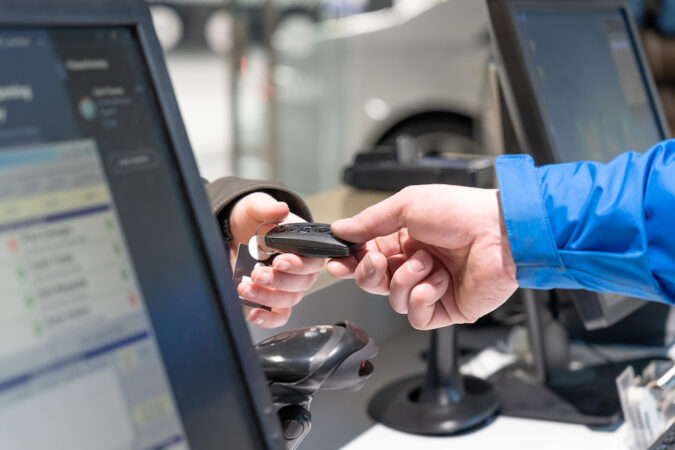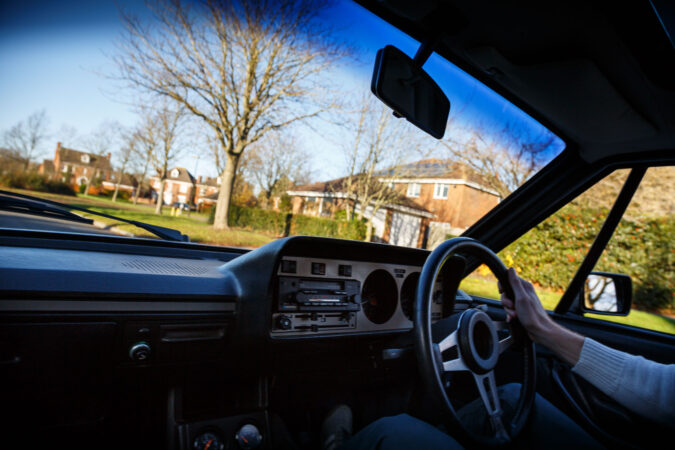We love cars, but public roads can be a dangerous place for your pride and joy. Rough roads, reckless drivers, tight parking spaces all put your beloved car at risk. This is where a beater car comes in.
A beater car is essentially a car that you use for your daily needs without care. Come rain or shine, tarmac or mud, you can just drive it and do whatever you want with it. Here’s everything you need to know, and why you should consider owning a beater car:
What’s A Beater Car?
Okay, so what exactly is a beater car? It’s a slang term for a car that you drive on a daily basis without giving it much care. Normally, you want your car to be in good shape; smooth engine, slick paint, clean and tidy interior, right? We all love that, but as we all know, maintaining a car in perfect condition isn’t cheap.
Not the case with a beater car. The whole point of a beater car is so that you can drive it every day, possibly trashing it, and just not give a care about its looks and condition. As long as it turns on in the morning and gets the job done, that’s all it has to do.
Meanwhile, your preferred car can stay in the garage. Away from the dangers of the world, you can instead use it when you know you’ll be driving on smooth roads or when it’s absolutely necessary.
Why You Should Own A Beater Car
Sounds sweet, right? If you’re not convinced, here are some more reasons why you should consider getting a beater:
1. They’re Dirt Cheap
While technically a new car can also be a beater car, most people buy secondhand cars that are already in less than prime condition to be their beater car. Since you’re not going to take care of it anyway, why not just buy something cheap and run it to the ground?
After all, that’s kind of like the whole point of them: to save money. Most people typically spend less than $2,000 on beater cars. Doesn’t sound like much but you do have a wide range of options.
Looking for a sedan? Early 2000s Focus and 90s Civics come to mind. Looking for something more American? There are a bunch of Pontiacs and Chevys in the marketplace. Or are you planning to haul or offroading? We saw a couple of tasty Chevy Blazer and Silverado on Edmunds.
Of course, they won’t be in prime condition, and they likely have done at least 200,000 miles. But who cares if you’re going to run it to the ground? Additionally, you can increase your budget if you like. Spend as much as you like as long as you’re comfortable with beating that car every day.
2. Filling Them Up Is Cheap
Okay, so technically older cars tend to be gas guzzlers. Whether it’s because of older engine technology or worn-out engine parts, they tend to drink more thus you need more fuel.
However, you don’t have to worry about what type of fuel you give it. Pick the cheapest fuel from the pump, and you’re good to go. No need for those premium fuels, you can save them for your new and shiny ride instead. Or maybe spend it on dodgy fuel station air fresheners to mask the stench of the previous owner.
3. Lower Insurance Premiums
While insurance is mandatory, having a beater means you don’t need to pay for the full coverage. Of course, full coverage isn’t mandatory either unless you lease or finance a car, but with a new car, you would often feel more at ease when you have full coverage.
With a secondhand beater car that you buy cash, this isn’t mandatory and why would you anyway? You’ll end up paying a lot of money for the insurance, while the payout should you total the car is not going to be anywhere near what you pay the insurance company.
4. Resale Value? What’s That?
Resale value is often a consideration for car buyers. With new cars, you’ll immediately lose anywhere between 10 – 30% the moment you take ownership of that car. Meanwhile, secondhand cars that are relatively new will lose between 40 – 70% of their value after five years, depending on the car’s make and model.
While this isn’t strictly true at the time of writing – secondhand cars are skyrocketing in value due to supply chain issues – this is what happens when you buy almost any car.
However, with beater cars, they’re already dirt cheap anyway because of their condition. How much more can you lose? And besides, you’re already planning to run them into the ground. Or to be exact, to the junkyard.
All this means you don’t have to worry about resale value. The endgame is usually to drive it until they stop working, then scrap the car at a junkyard. You’ll get anywhere between $100 – $300 depending on the car.
5. Save Money On Repairs
There are plenty more reasons why you should own a beater car. But the bottom line is that it’s about saving money. Scratches, bumper dents, or door dings? Who cares if the car can still run? You don’t have to spend money on body repairs or expensive car detailing and coating.
Maintenance services? Oil change, new filters, and brake pads every once in a while, and you’re good. As long as the car starts, and it’s still safe to drive, why spend more? You can always turn up the volume on the radio to drown out that funny noise you’re hearing from the engine. That’s why I used to do with my beater.
Even better, you can save more money by doing maintenance and repairs yourself. Older cars are relatively simpler to work on and don’t require a state-of-the-art computer just to diagnose. Sure, you’ll still need the right tools and watch a few tutorials on Youtube, but most repairs are usually doable yourself.
6. You Can Drive It To Your Heart’s Content
The other reasons above have mostly been about saving money. This last – and best – reason is about the pleasure that you can get from owning a beater car.
As car enthusiasts, what we love the most about beater cars is that we can drive them as hard as we like. Sure, newer and expensive cars are nicer to drive. However, there are consequences to, shall we say, “spirited drives.”
Parts tend to wear out faster when you push the engine, not to mention you may damage something. But with beater cars, you can do whatever you like. Standing starts? Nice. Want to do burnouts? Let’s burn those rubbers. Want to redline the engine all the way home? Be our guest.
The point is since they were cheap to buy and don’t care about the car’s condition, you can drive it in any manner that you like. Within legal limits, of course. We don’t condone breaking traffic laws.
Beater Car Buying Tips
Now that we’ve probably convinced you to buy a beater car, the next step is to find one. We’ll give you some of our recommendations, but first, here are our tips:
1. Know Your Goals
The first thing you need to do is to know your goals so that you can manage your expectation for this beater car. If you want a car to trash around and have fun with, you don’t need to be picky and just pick one that fits your budget.
However, if you’re planning to drive this beater as a daily and want to use it for the next few years, then you’ll want a car in decent condition. In this case, you’ll want to pay attention to our other tips:
2. Check The Mileage
While mileage doesn’t always signify the car’s condition, lower mileage cars tend to last longer. Most cars will last for 200,000 miles before they need major repairs, but reliable ones can go up to 300,000 miles.
If you can find a beater under 200,000 miles, then those are worth taking a closer look at. But as long as it’s under 250,000 miles then it should be quite good. Of course, there are other things you need to check:
3. Check The VIN
VIN stands for Vehicle Identification Number. Every car has a 17-digit alphanumeric code that explains the car’s make and model as well as some basic specs. It’s like a birth certificate slash tracking number for every car.
Not only that, but the VIN can also tell you about the car’s history. There are websites where you can look up VINs and they will tell you the history of the car such as accident or damage reports – if it’s on their database.
VIN is not a piece of sensitive information, so you can ask the seller to give you the VIN beforehand. Chances are they won’t mind. If it turns out the VIN doesn’t match the car’s make and model that’s advertised, then walk away. Avoid it like the plague.
4. Check The Car’s History
It’s unlikely that you’ll find a complete history and service record of a beater car that’s under $5,000. However, you should still ask for it and check it out. A somewhat complete history and service record will be useful so can tell whether the car has been well taken care of or not.
If you somehow found a car with a full history and very few owners, that’s probably a hidden gem and you should keep a close eye on the car. If the ownership history is a bit spotty, then you’ll have no choice but to do a close inspection:
5. Look Out For Rust And Frame Damage
The thing about rust is that once it appears, they’re going to spread. Every car will rust, but you’ll want to look for one with the least rust to give you a good starting point.
Rust spots on the body are not a big concern. Chances are you can fix them on your own as well. The key thing here is to look underneath and see if there’s any frame rust. Rust on the frame can compromise the structural integrity of the car, thus compromising safety.
Remember, we want a cheap car to run every day, not a death trap. If there seems to be excessive rust underneath, you might want to walk away. It’s usually acceptable if the rust doesn’t break off when you touch it. If the rust is only on the body, or at least it’s minor, you can still fix it yourself.
While you’re down there, also check for frame damage. See if the frame/chassis is bent or damaged. You don’t want a car with a bad frame since it can compromise the car’s structural integrity. And finally, check for oil leaks. They’re expensive to repair and will cause further damage to the powertrain.
6. Further Inspect The Car
As mentioned, look out for rust. Rust is a pain to deal with and the fewer rust spots, the better. Inspect the car’s exterior and afterward, check the accessories. You can probably gloss over minor accessories that aren’t working such as the interior light or a window that won’t wind down.
However, keep an eye on the important things like the engine, exterior lights, and suspension. Take the car for a test drive, and listen for unusual noises. Beater cars are unlikely to be in perfect condition, but you’ll still want to find one in decent condition to give you a good starting point.
If you’re not sure about your own car knowledge, bring a trusted mechanic or find a professional pre-purchase inspection service. They cost between $150 – $250 but will be able to tell you the complete list of things wrong with the car.
7. Don’t Rush It
We know you’re excited by the prospect of having a car that you can drive without care and eager to get a beater, but the key thing here is don’t rush it. It’s important to make a checklist of what you want from the beater, and then find a car that meets that checklist.
For example, if you found a car that ticks almost all the boxes but the air-conditioning doesn’t work, then don’t rush to buy it. You don’t want to be stuck in a car without air-conditioning on a hot summer day, do you?
There are plenty of online car marketplaces now, and you should scour each one of them. We’re sure your beater soulmate is out there somewhere.
Beater Car Recommendations
We’re going to give you some quick recommendations. Here are the top three cars you should consider, and some honorable mentions as well:
1. Honda Civic
It’s a Civic. It will run until the end of time, what else do you want in a beater car? They typically can last up to 200,000 miles without major problems, but it’s not uncommon to see them last until 300,000 miles before major issues pop up.
You’ll want the early to mid 90s models though, and you should avoid the 2000s models as they have quite a lot of problems, including transmission, air-conditioning, and tire wear problems.
We found a tasty ’98 Civic DX coupe for just under $5,000 with just 160,000 miles. But there are plenty out there that are cheaper and will fit your budget. Read our article about the Honda Civic’s reliability, as well as are Honda Civic reliable, to learn more about them.
There are other sedans that are cheaper than the Civic, but it gets our pick because they’re fun to drive, reliable, and reasonably priced.
2. Ford F-150
Need something more heavy-duty? Then the Ford F-150 will probably fit the bill. To be honest, we wanted to recommend the Toyota Tundra or the Tacoma instead. Those trucks, much like the Civic, will keep running until the end of the world. However, these cars are so popular that it’s impossible to buy them for under $5,000.
So, the F-150 is the next best thing. While Ford rarely tops the list of most reliable car brands, older F-150s are reliable and capable. Some of the best model years (according to complaints received by the NHTSA) are the ’93 – ’96 models.
A good specimen will cost anywhere between $10,000 to $18,000. However, there are plenty of them that are under that, and ones under $5,000 are more common than the Tundra. Keep in mind that at this price you won’t find anything with under 200,000 miles on the clock.
3. Jeep Grand Cherokee
If you want an SUV rather than a pickup truck, can we interest you in a Jeep Grand Cherokee? These Grand Cherokees are dirt cheap, with most 90s and early 2000s models costing under $5,000. We’ve also seen some under the $2,000 mark.
We’re not quite sure why they’re so cheap, as they are capable offroaders with decent reliability. But hey, good for us folks looking for a beater, no?
You might want to look for the second-gen version (1999 – 2004), as the first-gen ones had more problem areas including fuel tank leaks and transmission issues. Meanwhile, the issue for the second-gen was mostly with seat belt mountings (such as the seat belt buckle).
Also, the 2001 model had issues with the seat heater where it would get too warm to the point where it might start a fire. Aside from that, the early 2000s Grand Cherokee seems to be very reliable. RepairPal gave it a rating of 3.8 out of 5 stars, which is slightly above average.
Honorable Mentions
Of course, there are more options. There are plenty of cheap and reliable cars that you can buy as a beater, here are our honorable mentions along with their best model year:
- Toyota Corolla (1997 & 2008)
- Toyota Camry (2003 – 2005, 2004 is often regarded as the best)
- Ford Focus (1998 – 2007)
- Buick LeSabre (2005)
- Honda Accord (1990 – 1997)
- Chevy Silverado 1500 (1999 – 2005)
Beater Car: Questions And Answers
Still got questions about buying a beater car? These might be helpful:
How Much Should I Spend On A Beater Car?
Most people will say that you should spend at most $2,000 on a beater car, but we think $5,000 is still a reasonable amount to spend on a beater car. That way you get a car that’s in slightly better condition, but not too good either that you feel bad about making it a beater car.
Do I Really Need A Beater Car?
We think that everyone needs to have that one car they can drive daily and not care about. Maintaining a car in perfect condition is expensive, so, why not have something to drive and trash every day while your nice car stays clean at home?
Of course, there are instances where you might not need a beater car. For example, if you want a car that’s 100% reliable and comfortable, then a beater car is not going to be that. They might get you where you need to be, but the A/C or some other accessory may fail along the way.
Additionally, maybe you only have space for one car at your home, or you just want one car to do it all. In this case, you’re better off buying a car that’s newer and fits all your needs.
Another reason not to buy a beater is if you just can’t stand a car that isn’t in perfect condition. I can ignore minor dents and scratches on my car, but maybe you’re not like me. If you just can’t ignore this, even in a beater, might as well get something nicer.
How Many Miles Can A Beater Last?
We can’t say because it depends on the condition of the car when you buy it. They can last for 50,000 miles or they may break down after just a year of driving.
The key thing here is to know your goal and manage expectations. Follow our tips on buying a beater car and you’ll be able to find the right beater for you.
Any Tips On Beater Car Ownership?
Since they’re not in prime condition, it’s probably best to keep a safety kit and some tools in the car. So if the car breaks down, you’ll be able to help yourself.
We also recommend keeping up with general maintenance, such as oil and filter changes, brake pads replacement, and more. While the whole point of beater cars is to just run them to the ground, you want to at least keep the car safe to drive. If you’re planning to drive the beater for a longer period, you definitely want to keep up with general maintenance.
10 Beater Cars You Can Buy for Under $5,000 – Facts
- The Toyota Camry 2002-2006 has a reputation for durability and reliability, with 90% of all Toyota Camrys sold since 1995 still on the road.
- The 2008-2011 Ford Focus is a solid purchase for your beater car dreams, with parts being widely available and maintenance being relatively inexpensive.
- The Toyota Sienna 2004-2010 is a great beater car for starting a family, with many reviews citing its reliability and durability.
- The Scion tC 2005-2010 is an excellent option for those who enjoy personalizing their vehicles, with many available features and a reputation for quality and reliability.
- The Fiat 500 2008-2015 is a newer option for a beater car under $5,000, with a reputation for being great for city driving and parking.
- The 2001-2007 Ford Escape is a great SUV option for your beater car with a large cargo area and easy-to-find parts.
- The Nissan Versa 2007-2011 is a fuel-efficient choice with ample backseat space and a smooth ride, with the 2011 model promising 34 miles per gallon on the highway.
- The Subaru Outback 2005-2009 is a go-to beater car for anyone with an active lifestyle, with inspiration taken from the AMC Eagle.
- The Nissan Xterra 1999-2004 is a capable off-roader that remains an affordable four-wheel drive option for your $5,000 budget.
- The Honda Civic 2006-2010 has a long and successful history with a range of models available and thousands of options for under $5,000.
Beater Car: In Conclusion…
So, to summarize, a beater car is a cheap car that you drive every day without worrying about its general condition. It may not be for everyone, but you should definitely consider one if you’re looking for a car that you can drive without care.




